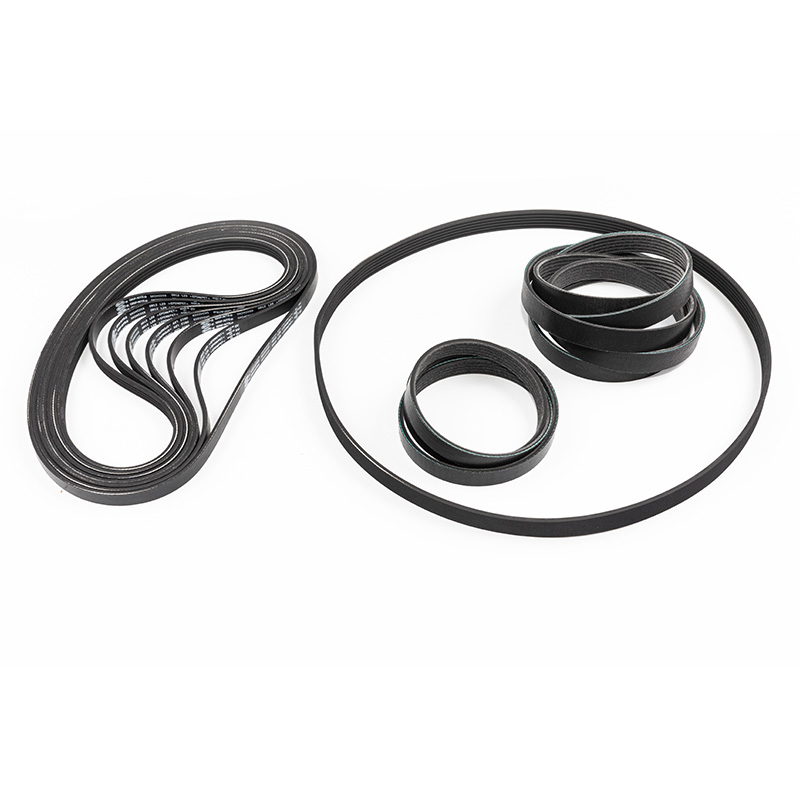Common signs of V-ribbed belt wear and deterioration in automotive applications include:
1.Cracks and Fraying:
Cracks or fissures on the surface of the V-ribbed belt are a visible indication of material fatigue and wear.
Fraying occurs when the edges of the belt begin to unravel, resulting in reduced structural integrity.
These issues can be easily spotted during a visual inspection of the belt. Using proper lighting and a keen eye, examine the entire length of the belt for any such imperfections.
2.Glazing:
Glazing refers to a glossy or polished appearance on the underside of the V-ribbed belt.
It is typically caused by excessive friction and slipping between the belt and pulleys.
A belt that has become glazed may not grip the pulleys effectively, leading to diminished power transmission.
To diagnose glazing, inspect the underside of the belt by gently flexing it to reveal the degree of glossiness.
3.Visible Ribs:
V-ribbed belts feature a series of ribs on their inner surface that engage with the grooves of pulleys.
These ribs should have clearly defined edges. If they appear worn down or flattened, it signifies belt wear.
Examine the belt carefully to ensure the ribs maintain their intended shape.
4.Squealing Noise:
A high-pitched squealing noise during engine operation is often associated with belt slippage or inadequate tension.
This noise can become more pronounced when accelerating or activating accessories like the air conditioner or power steering.
To diagnose the source of the noise, conduct a detailed auditory inspection and consider adjusting the belt tension if necessary.
5.Tension Loss:
V-ribbed belts require proper tension to function optimally.
An insufficiently tensioned belt may appear loose and exhibit slack.
Use a belt tension gauge to measure the tension, ensuring it falls within the manufacturer's recommended range.
6.Vibration:
Vibrations felt in the vehicle, especially through the steering wheel, can indicate issues with belt alignment or condition.
Misaligned belts can cause uneven wear and ultimately lead to performance problems.
Conduct a thorough examination of the belt's alignment and pulley conditions to address any issues causing vibrations.
7.Accessories Not Working:
V-ribbed belts are responsible for driving various vehicle accessories, including the alternator, power steering pump, and air conditioning compressor.
When a belt deteriorates or breaks, these accessories may fail to operate properly or cease functioning altogether.
If any accessories are not working as expected, it's crucial to inspect the belt condition and replace it promptly if necessary.
8.Belt Dust:
Belt dust accumulating around pulleys and within the engine compartment is a telltale sign of belt wear.
The friction and abrasion caused by a deteriorating belt can generate fine dust particles.
Regularly check for the presence of belt dust and investigate the underlying belt condition if found.
To diagnose V-ribbed belt wear and deterioration:
1.Visual Inspection: Carefully examine the belt's surface for any of the signs mentioned above, including cracks, glazing, fraying, or worn ribs.
2.Tension Measurement: Use a belt tension gauge to measure the tension of the belt. Proper tension is crucial for belt longevity and performance.
3.Alignment Check: Ensure that the belt is properly aligned with all pulleys. Misalignment can cause uneven wear and noise.
4.Listen for Noise: Pay attention to any unusual noises during engine operation, especially when accessories are engaged.
5.Check for Accessory Functionality: Test the operation of accessories like the alternator, power steering, and air conditioning to ensure they are working correctly.
6.Inspect Pulleys: Examine the condition of the belt pulleys for any damage or wear that could affect belt performance.
7.Consult Service Records: Review the vehicle's service history to determine when the belt was last replaced or serviced. Regular replacement intervals should be adhered to.
Automotive V-ribbed belts are belts used to drive a variety of components in an automotive engine, including the alternator, water pump, and air conditioning compressor. The V-ribbed design allows for a compact and efficient installation, which helps to save space and reduce weight in the engine compartment.


 View More >>
View More >>
 View More >>
View More >>
 View More >>
View More >>
 View More >>
View More >>
 View More >>
View More >>
 View More >>
View More >>
 View More >>
View More >>
 View More >>
View More >>
 View More >>
View More >>
 View More >>
View More >>
 View More >>
View More >>
 View More >>
View More >>